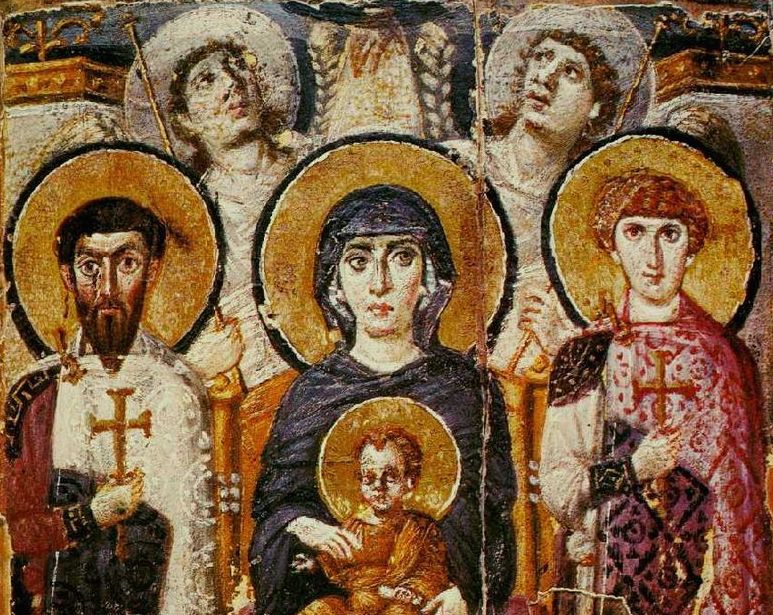The Mother of God in Late Antique Constantinople: Leading the Romans into Middle Byzantium, lecture by Richard Barrett (Indiana University, Bloomington, and Holy Cross Greek Orthodox School of Theology Resident Fellow), Hellenic College Holy Cross, Archbishop Iakovos Library Reading Room, April 27, 2015, 3:30–4:30
The late antique (c. 431–c. 700) cult of the Virgin Mary, and its flourishing in the Byzantine Empire, the Eastern half of the Roman world, represents a unique interdisciplinary opportunity to study urban history. Following the dogmatization of the Virgin's title of Theotokos “Birthgiver of God” at the Council of Ephesus in 431, throughout the Roman world there is an initial impulse to express conciliar orthodoxy in very Roman terms that is, to build physical monuments, such as Santa Maria Maggiore in Rome and the Kathismata church in Jerusalem. By contrast, Marian devotions in New Rome, Constantinople, are expressed in very Constantinopolitan terms; a creative impulse gives rise to the composition of hymnody and the development of liturgical practices, such as the so-called Akathistos, a lengthy theological discourse in sung verse, composed immediately following the Council. Church construction in Constantinople then follows the development of the devotional practices.
Throughout the sixth century, these liturgical practices continue to develop with Justinian’s project of reuniting the Roman Empire; the sung theological homilies known as kontakia, most notably those of Romanos the Melodist, intertwine public cathedral worship with imperial ceremony. History intervenes in the development of public Byzantine Marian devotions, however. The successful defense of the city from the Persians and Avars in 626, claimed by the contemporary sources to be the result of physical intervention by the Mother of God herself, was represented in the historiographical tradition by the relics, the image, and the physical presence of the Mother of God. The particular historical significance impressed upon these objects and their performative context changed the Virgin Mary from an exalted figure passively defined largely in terms of her Son and becomes a historical actor in her own right with her own interests, namely, the well-being of the city of Constantinople. In other words, the 626 siege and its aftermath changed the late antique cult of the Virgin into the Middle Byzantine cult of the Virgin, in which only those late antique elements are preserved that were directly related to the events of 626. Normative public ritual reacts descriptively to historical circumstances, in other words.
This project will show that the association of the Virgin with the victory of 626 happened because of the precedent and context of public ritual devotion to the Virgin Mary in Constantinople, unique in its creative particulars in the late antique Roman world.
